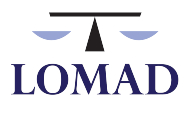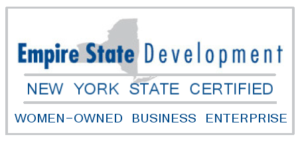As everyone probably knows, Workers’ Compensation Law §21(4) presumes that a work-related accident isn’t only due to an employee’s intoxication on the job, unless there is substantial evidence to the contrary. Workers’ Compensation Law §10(1) similarly says that an employer must compensate employees for a work-related injury regardless of fault unless the injury was solely caused by intoxication from alcohol or a controlled substance. The World Health Organization defines intoxication as a condition following administration of a psychoactive substance and results in disturbances in the level of consciousness, cognition, perception, effect or behavior or other psycho-physiological functions and responses. The Court has upheld this, finding that intoxication may overcome the presumption of §21. “The documentary and testimonial evidence presented by the employer as to decedent’s intoxication, the circumstances preceding the accident and the manner in which it occurred sufficiently rebutted the presumption contained in Workers’ Compensation Law § 21(4) and established that decedent’s intoxication was the sole cause of the accident.” Purcell v. American Sip Corp. 248 A.D.2d 844 (1998), citing Matter of Majune v. Good Humor Corp., 26 A.D.2d 849, 849–850, 273 N.Y.S.2d 819; Matter of Bowers v. Long Is. Light. Co., 1 A.D.2d 719, 720, 146 N.Y.S.2d 860; Matter of Calka v. Mamaroneck Lodge BPOE, 285 App.Div. 1093, 139 N.Y.S.2d 316; Matter of Balk v. Austin Ford Logan, 221 A.D.2d 795, 633 N.Y.S.2d 675) . In other words, if a claimant is drunk or drugged, you may have a viable intoxication defense.
We had a recent case where a worker fell 150 feet off a cell tower. (Yes, he survived.) After being notified of the accident, the carrier sent an investigator to interview the owner of the company, who confirmed that he had personally checked over the safety gear two days before the accident and it was in perfect working condition. That employer also said that the claimant had a longstanding history of drug abuse. He hadn’t had the claimant take a urine drug screen when he hired him because it was while the state was largely locked down, and he hadn’t gotten a drug screen when the restrictions lifted because he trusted the claimant’s word that he wasn’t using. (Pro tip to any employers reading this: Never take their word. Always get a drug screen!) The employer also said he had been the first one to reach the claimant after he fell, and the claimant apologized to him and said he “screwed up.” The carrier very sensibly subpoenaed the emergency department records, which revealed that the hospital performed a urine drug screen upon admission which tested positive for an assortment of illegal drugs, including cocaine and marijuana. (Second pro tip: always get the emergency room records and make sure your subpoena covers tox screens. Hospitals don’t always conduct them, but a lot of EDs will run a tox screen upon admission. And it’s always useful to see what the injured worker has to say right after the accident compared to what s/he tells their own doctor a few weeks or months later!)
So now we had a positive drug screen and a seething employer ready to testify that the safety equipment was working. We still had to overcome the §21 presumption and show that this accident was solely caused by the claimant’s use of controlled substances. We deposed the ED doctor, who confirmed that the positive tox screen was performed on the day of accident and conceded that the drugs shown in the tox screen could cause altered cognition, altered coordination, euphoria, dizziness and altered consciousness. He also confirmed that the drugs administered by the hospital for pain control wouldn’t flag as any of the illicit substances on the tox screen. We now had a medical opinion which strongly suggested the claimant was in an altered state at the time of the accident and confirmation that his positive tox screen was taken on the date of the accident and was not, despite the claimant’s attorney claimed, a result of the medications provided by his doctors.
It was a good start, but we still needed to convince the judge that there wasn’t any other cause for the claimant’s accident. Here, that was relatively straightforward. He fell off a cell phone tower and it wasn’t because the tower broke, so either he’d screwed up with his safety gear, or the gear itself had failed. In order to win, we had to prove that the gear hadn’t failed. We reached out to the employer witness, who was the owner of the company, to prepare him to testify. While talking to him, we focused heavily on the usual safety requirements and how they worked to make sure that we had a solid understanding of what precautions would have applied if the claimant had properly used his safety gear. We even had the employer hop into a set of gear himself and send us pictures so we understood what each piece of gear was and how it worked! We built a timeline to make it clear to the judge that the safety gear was checked by our witness two days prior to the accident, checked by the injured worker himself on the day of the accident before he went up the tower, and checked by our witness after the accident before it was confiscated by OSHA as part of their investigation. We also made sure our witness understood why this timeline was so important, and why we needed the judge to conclude that the safety gear couldn’t possibly be the reason the claimant fell.
At the trial, the claimant asserted that he fell after leaning out too far to push a boom away, which was part of his job duties, and vehemently denied taking any drugs. However, he couldn’t explain away the positive tox screen on cross and he had to concede that he hadn’t reported any problems with his safety gear before he went up the tower. Because we’d gone over it with him beforehand, our witness kept his cool and was able to discuss the safety equipment and how it worked in detail. He explained that if the claimant had properly used his safety gear, he would only have fallen about 9 inches. Then, in a coup de grâce, he testified that while kneeling over the claimant on the ground, he looked up and saw the safety gear still properly attached to the tower. He confirmed that he had personally checked it before OSHA took it, and it worked perfectly. The only explanation for the fall was user error.
The judge agreed with us, and disallowed the case completely under §10(1).

